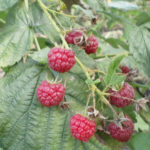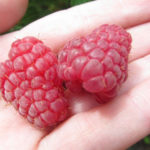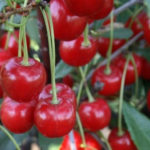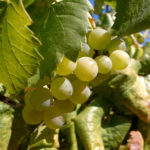Gooseberry Beryl
In the electronic journal "Modern Gardening" for 2013, studies of the genetic collection of gooseberries in the South Urals were published. It was noted that for almost 40 years of painstaking work, it was possible to create promising varieties that show excellent characteristics. Among them - Beryl, recognized as one of the leaders in taste and large-fruited. The species was obtained in the South Ural Research Institute of Fruit and Vegetable and Potato Growing as a result of crossing Malachite and Nugget, author - V.S. Ilyin. This gooseberry was included in the State Register of Breeding Achievements of the Russian Federation in 1998. Zoned across the Ural (Orenburg, Kurgan, Chelyabinsk regions and the Republic of Bashkortostan) and West Siberian (Novosibirsk, Tomsk, Tyumen, Omsk, Kemerovo regions, the Altai Republic and Altai Territory) regions, where in difficult conditions it reveals its maximum potential. The variety is suitable for hobby and industrial cultivation.
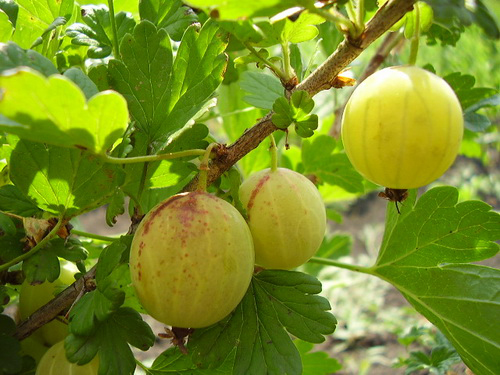
Description
The height of the plant is average, the spreading is moderate, the crown is neat. Beryl bush is dense. The growing arched shoots are medium-thick, with overhanging tops. The bark has a moderate anthocyanin coloration. The spine is insignificant. Thorns are weak, solitary, directed downward, less often upward or perpendicular to the shoot, most often located in the lower part of the shoot. Zero shoots are thornless. The leaves are large, green, non-pubescent, soft to the touch, with a slightly wrinkled shiny surface. The leaf blade is smooth, has a concavity along the central veins. A five-lobed gooseberry leaf with deep cuts. The middle lobe, rising above the lateral lobes, has a rounded-elongated outline with pointed tops and additional protrusions. The central veins of the lateral lobes are connected at a right angle, less often at an obtuse one. The lateral lobes are widely spaced, their tops are slightly pointed. The basal lobes are well developed. The base of the leaf is medium in size, has a wide triangular shape. The cloves of Beryl leaves are large, slightly bent. The petiole is light green, normal in length and thickness, slightly pubescent. The petiole trace is slightly rounded. The buds of the variety are of normal size, oblong-oval, brown, growing deviating from the shoot. Gooseberry flowers, one might say, are large, glass-shaped, bright or medium-colored. Make up a two-flowered inflorescence. Sepals are separate, wide, of regular length, curved. Painted pink or pale pink, sometimes yellowish green with a pink tint. The ovary is glabrous, rounded. The pedicel is long, thin, slightly pubescent, green in color.

Beryl berries are quite impressive in size, sometimes 2 times larger than cherries, relatively one-dimensional, spherical in shape. The usual weight is from 3.9 to 9.2 grams (2.8 - 3.4 grams according to the State Register of Varieties). The skin is thin, without pubescence. The color is yellowish-green or light green, rather even whitish, sometimes a slight reddish tan appears, the venation is clearly visible. The cup is medium-sized, open or closed. The gooseberry pulp is juicy, low-seeded - the correlation between berry weight and the number of seeds is only 0.24. The taste is good, sweet and sour, closer to dessert. Assessment of tasters 5 points (according to the State Register - 4.3 points). The peduncle is long, thin, green. 100 grams of raw product contains: the sum of sugars - 8.0 - 9.85%, titratable acids - 0.52 - 2.2%, ascorbic acid - 17.2 mg.
Variety characteristics
- Active fruiting in Beryl begins 5 years after planting;
- ripening period - medium late;
- the fertility of the gooseberry is high, the yield is 8 - 10 kg per bush. According to VNIISPK, the average long-term yield is 10.3 t / ha, the maximum is 33.3 t / ha, from 3.1 to 10.0 kg per bush. During the variety trials from 1993 to 1997 at the Barabinsky GSU, the yield was 92.2 c / ha, for 1993 - 1995 at the Bashkir - 84.4 c / ha (data from the State Register);
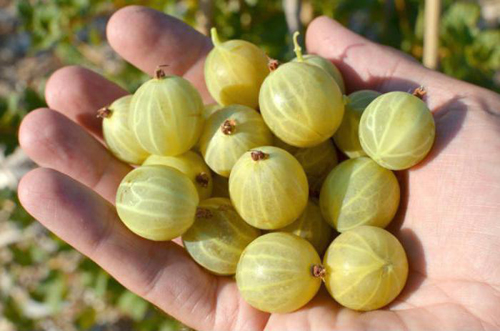
- the variety was bred specifically for unfavorable conditions, therefore, increased attention was paid to frost resistance. In this regard, Beryl has something to be proud of - the plant is not afraid of frosts down to -36 ° С, and according to some reports, even up to -38 ° С;
- the variety has good immunity, there is a high resistance to powdery mildew, fruit rot. But there is evidence of insufficient resistance to septoria;
- self-fertility is high - with natural pollination, the plant is able to tie up to 53.8% of the crop;
- drought resistance is normal, gooseberries are able to survive short periods of drought;
- despite the fact that the skin is thin, it has good strength, therefore, the fruits are able to endure long-term transportation without losing their presentation;
- the way of using the fruits is universal. Thanks to the dessert taste, both adults and children are happy to eat berries in their natural form. In addition, you can use the harvest for winter harvesting - jam, berries, grated with sugar or in your own juice, jam, marmalade, liqueur.
Planting and leaving
Beryl seedlings can be planted in autumn, in September, with the expectation that at least 2 - 3 weeks will remain before the onset of stable cold weather. The variety is undemanding to soils, will grow on loams, sandystones, clay and sandy soils, the main thing is that they have a suitable structure (moisture and air permeability, nutritional value). The site should be well lit by the sun. Definitely refuse to plant gooseberries in cold, swampy soils with high acidity - the culture will not grow in them. If there is no other site, a larger planting pit will help to correct the situation, at the bottom of which drainage must be laid and the volume filled with suitable soil. The rest of the variety does not require special care, it is standard for the culture as a whole. In the spring, preventive spraying against diseases and pests is carried out, top dressing can combine organic matter and mineral fertilizers, watering should be moderate, pruning is required.
Beryl is an excellent winter-hardy variety for growing in the unfavorable conditions of the Urals. It is very unpretentious, therefore it is quite suitable for a novice gardener. It is appreciated for its large fruit, yield and taste. You can harvest gooseberries without fear - there are very few thorns and they are all located at the bottom of the shoot. The disadvantage is the defeat of septoria, and then to a moderate extent.

